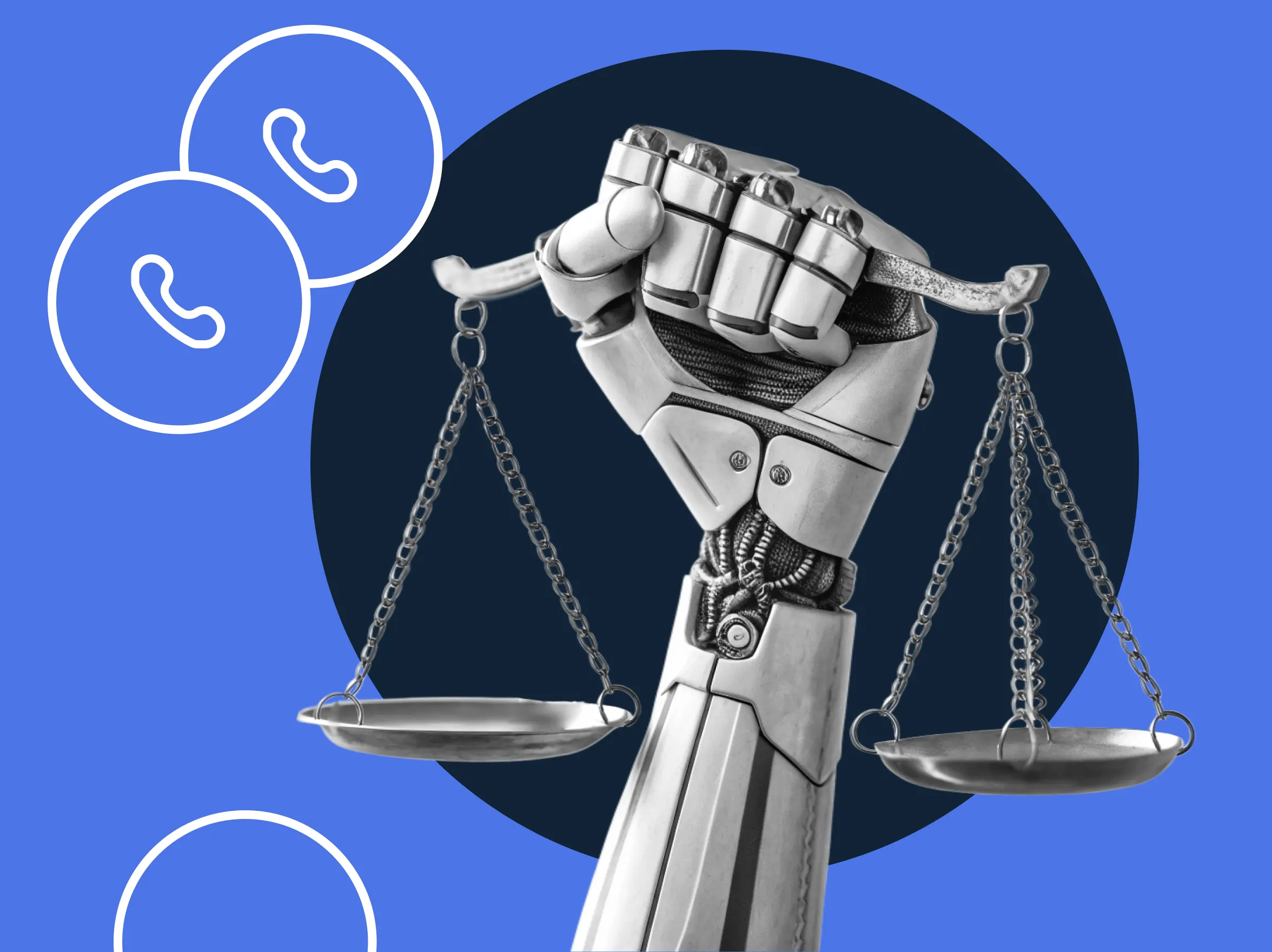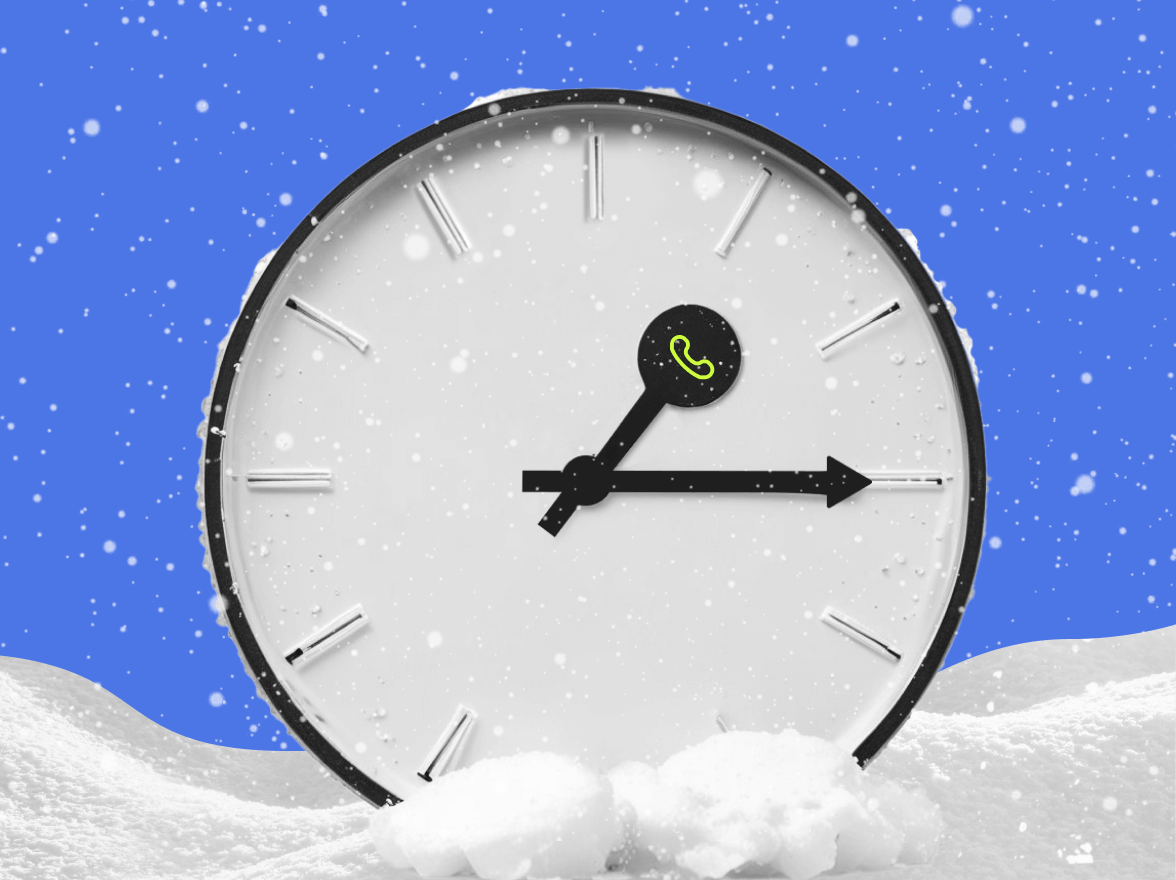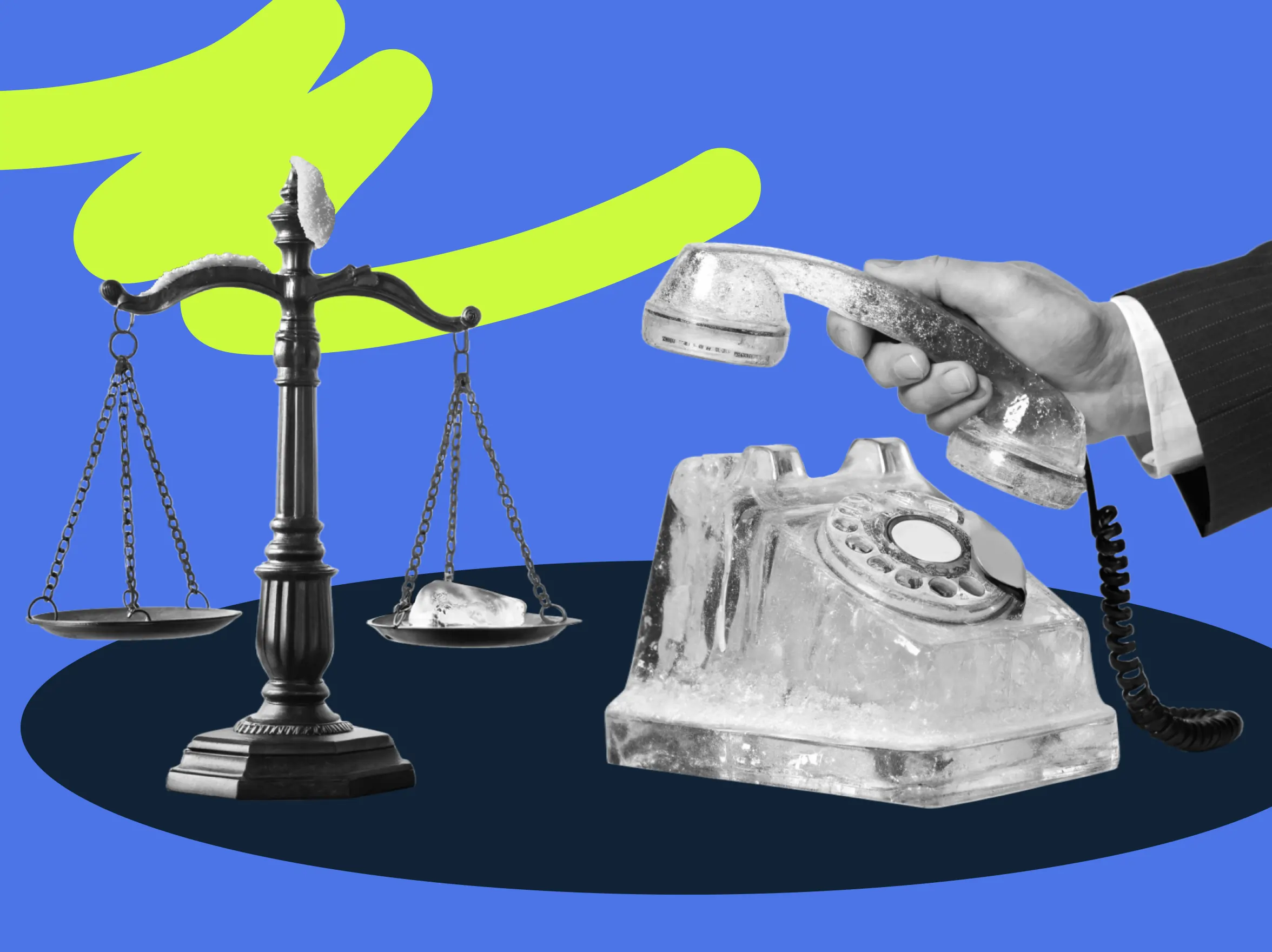This information is purely educational in nature, and should not be taken as legal advice.
Call monitoring technology is one of the most useful tools that call center managers have for making sure that everything is running as it should be. One study found that over 95% of call centers use some type of call monitoring in their day-to-day operations. And it’s no wonder why! There are tons of reasons why call centers employ this tech.
Below, we’ll give you a primer on what this technology can do for you – as well as where and how it’s legal.
Is call monitoring illegal?
No, call monitoring is not illegal in the United States. With that being said, there are certain rules you must abide by depending on where you are within the country.
While we will get into the details below, there are two key principles to understand. Everywhere in the United States at least one person in a call must be made aware that the call is being monitored or recorded. And in many states, all parties must be made aware.
Call monitoring tech types
While different services provide different types of call monitoring, MightyCall provides the four standard types.
Call Listening
Call listening is the most basic type of “monitoring” because it’s just that: monitoring. Here, the manager or administrator simply checks into calls without saying anything. No one is made aware that listening is definitively going on (though, as mentioned below, there are cases where you must inform leads in advance that the call may be monitored). The manager simply listens to the call.
This is excellent for Quality Assurance (QA) purposes, as well as for some training programs.
Call Whisper
The call whispering feature allows managers to quietly “whisper” to their agents during a call. The person the agent is speaking to will not know – it’ll just be between the agent and the manager.
This is incredibly useful for a variety of reasons. It’s an excellent training tool, as it can – like training wheels – allow new agents to make calls with just a little bit of help. It’s also useful for correcting agents: perhaps someone forgot to offer a special sale, or a decision on sales was made while the call was ongoing.
Call Barging
With call barging option, managers can “barge” into a call, forcing it to become a conference call of sorts. While there are non-emergency reasons for this (it’s an alternative to using the formal conference call option), it can also be used if, for example, a customer is demanding to speak to a manager but the agent still needs to be present.
Call Intercept
A step up from Call Barging, the Call Intercept feature lets managers “intercept” a call by kicking out the agent and taking charge of the call themselves. This can be a useful “emergency” tool if a call is going very poorly – for example, due to an irate customer or an overly rude agent – and some authority is needed.
However, it can also (like Call Barging) simply be an alternative means of a call transfer, and does not only have to be used in emergency situations.
Why call monitoring technology is so popular
There are lots of reasons why this technology is used so widely, most of them rather self-evident. Here are just four:
- Ensure quality service: By being able to listen to agents in real-time, you can ensure that they are putting the company’s best foot forward
- Improve your offerings: You can listen to agents in real-time to see what makes them tick. What’s really causing sales to pick up? You can see from numbers on a spreadsheet why certain agents are doing well, but you cannot know exactly why unless you hear the calls yourself.
- Conduct trainings: During an agent’s first 10–30 calls, supervisors can listen in and provide real-time guidance using Call Whisper to help them build confidence.
- Iron out problems: Is something taking longer than it should? Are sales slower across the board? Find out how your customers are responding to your agents’ scripts in real-time. Is there a particular aspect which can be tweaked?
Where is call monitoring legal?
Call monitoring is legal across the entire United States. However, that does not mean you can do whatever you want. There are still some key rules that must be followed.
Federal rules
The Wiretap Act set the standard for federal call monitoring rules. It sounds like it was made to combat the mob in the 1920s, but it’s from a few decades later (the late 1960s) and is still in force today. The law “prohibits the unauthorized interception, disclosure, and use of wire, oral, or electronic communications.” There is absolutely no getting around this: if you do not get permission, you will be fined or imprisoned – for up to five years!
The good news is that it’s ok, so long as one person is made aware of the monitoring (which means, yourself). This law was expanded in 1986 with the Electronic Communications Privacy Act (ECPA), which extended these protections to electronic communications (this includes VoIP calls).
State rules
Some states, as is their right as per the 10th amendment, go further than the federal government and have what is called two-party (or all-party) consent laws. These laws require two or all participants to be ok with their calls being monitored. This, of course, means you’ll need permission.
All-Party laws
A comprehensive legal review found the following states have all-party rules: California, Connecticut, Delaware, Florida, Illinois, Maryland, Massachusetts, Montana, Nevada, New Hampshire, Oregon, Pennsylvania, and Washington.
All-Party consent example: California
California has an all-party consent law which holds that it is a crime for “a person who, intentionally and without the consent of all parties to a confidential communication, uses an electronic amplifying or recording device to eavesdrop upon…the confidential communication.” Violations can cost you up to $2,500 per violation – and can also result in a year in jail.
How to avoid trouble
Unless you can guarantee that you will only ever call within a state that has single-party consent, there is one way and one way only to avoid legal jeopardy: simply inform all the people your agents speak with over the phone that their calls may be monitored. Here’s how in three easy steps:
- Use software that can automatically play messages: Ensure that your chosen calling software can allow you to start each call with a message before your agents begin speaking. That protects you even if your agent forgets to mention the call may be monitored.
- Record a message clearly relating that the call is monitored: Use an AI voice (or your own!) to clearly state that the call may be monitored. Even if you do not monitor all calls, if you monitor some, the message should be there to protect you from legal jeopardy.
- Use it for incoming and outgoing calls: The law makes no distinction between the two types. For incoming calls, you can use protect yourself with MightyCall’s Custom Greetings.
Monitoring your calls: Effective and safe – if you follow the rules!
These are fantastic tools which can really help you to improve how your business is run – so long as you do not take legal shortcuts. By simply letting people know they’re being monitored – even if it’s just so you can train your agents – you’ll be off the hook.




























